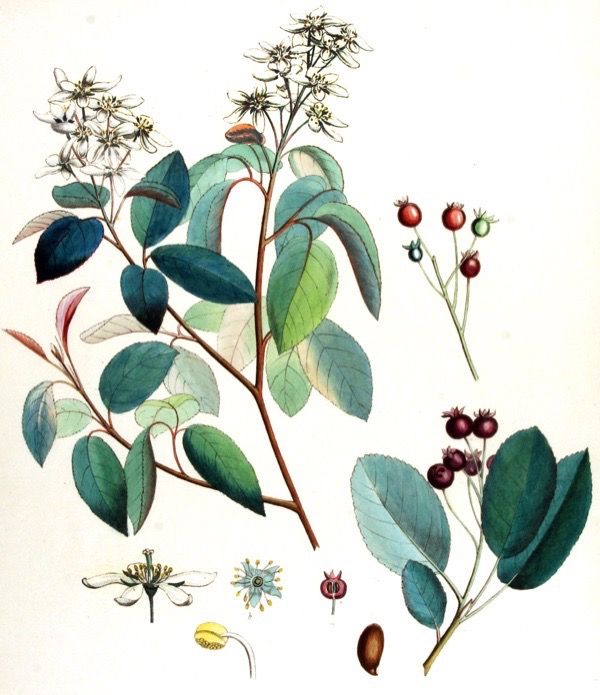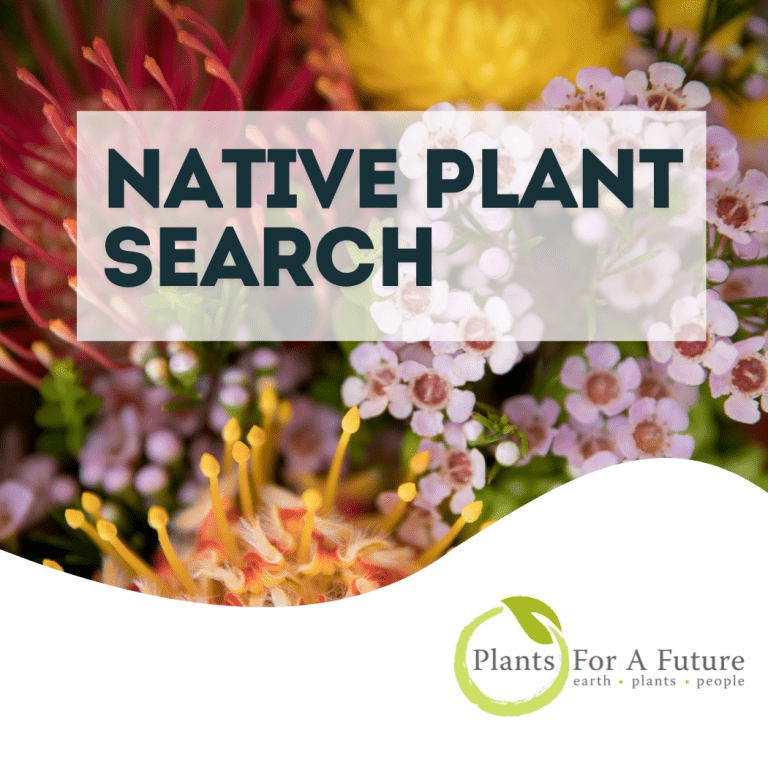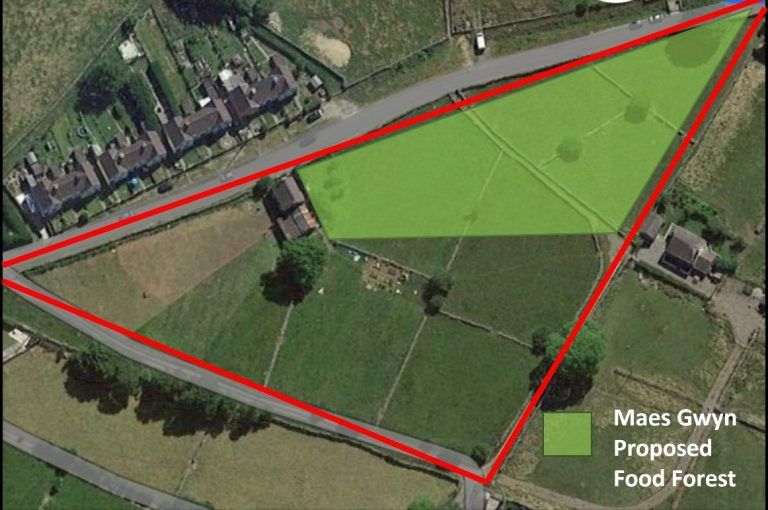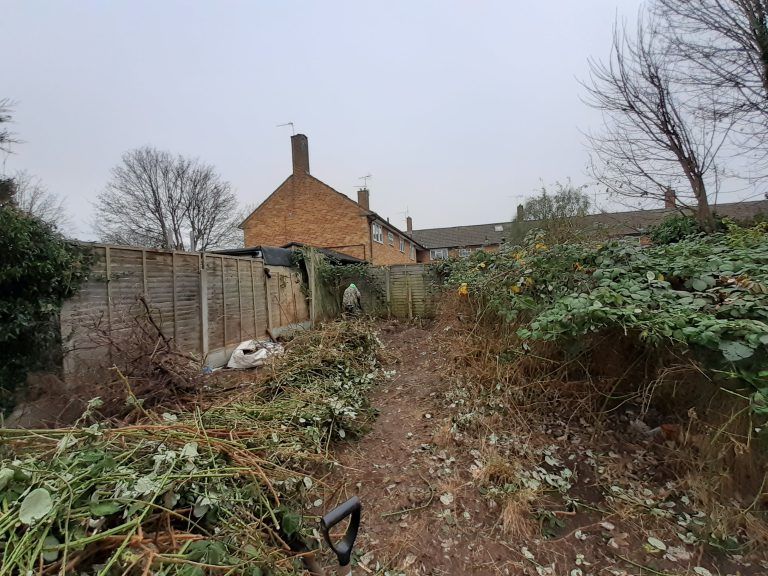Serviceberry is a small deciduous tree or large shrub growing to 6 m (19ft) by 4 m (13ft). It is in flower in April, and the seeds ripen from Jun to July. The flowers are hermaphrodite (have both male and female organs) and are pollinated by bees. The plant is self-fertile. Good planting habitats include as a woodland garden secondary tree, on a sunny edge, and in dappled shade.
The fruit can be eaten raw or cooked and has a sweet, succulent flavour, similar to apples. Fruit can be dried for later use. This is one of the nicest fruits in the genus, they can be eaten and enjoyed in quantity. The fruit is rich in iron and copper. It is up to 10mm in diameter.
Serviceberry prefers a rich loamy soil in a sunny position or semi-shade, but thrives in any soil that is not too dry or water-logged. It grows well in heavy clay soils, preferring an acid or neutral soil. It is hardy to about -25°c. This species does not produce suckers. All members of this genus have edible fruits and, while this is dry and uninteresting in some species, in many others it is sweet and juicy. Many of the species have potential for use in the garden as edible ornamentals. The main draw-back to this genus is that birds adore the fruit and will often completely strip a tree before it is fully ripe This species is worthy of special attention because of the quality of its fruit. It was formerly cultivated for these fruits and there are some named varieties. The fruit is freely produced in Britain. Considerable confusion has existed between this species and A. arborea, A. canadensis and A. laevis, classification. Some botanists consider this species to be a natural hybrid A. canadensis x A. laevis. It hybridizes freely with other members of this genus. Grafting onto seedlings of A. lamarckii or Sorbus aucuparia is sometimes practiced in order to avoid the potential problem of hybridizing.
Seed is best harvested ‘green’, when the seed is fully formed but before the seed coat has hardened, and then sown immediately in pots outdoors or in a cold frame. If stored seed is obtained early enough in the autumn, it can be given 4 weeks warm stratification before being left out in the winter, and it should then germinate in the spring. Otherwise seed can be very slow to germinate, perhaps taking 18 months or more. When large enough to handle, prick the seedlings out into individual pots and grow them on in a sheltered outdoor position, planting them out once they are 20cm or more tall. If there is sufficient seed it is best to sow it thinly in an outdoor seedbed. Grow the seedlings on for two years in the seedbed before planting them out into their permanent positions during the winter. Layering in spring – takes 18 months. Suckers can be divided in late winter. The suckers need to have been growing for 2 years before you dig them up, otherwise they will not have formed roots. They can be planted out straight into their permanent positions if required.
Apple Serviceberry Juneberry Snowy mespilus
Amelanchier lamarckii
Family: Rosaceae
Known Hazards: None known
Natural Habitats: Possibly no longer found in its original wild habitat, it is naturalized in S. England on sandy heaths and damp acid woods.
Natural Range: N. America. Naturalized in Britain.
Hardiness Zones: USDA 3. PFAF 4. Not frost tender
Type & Size: Small deciduous tree growing to 6 m (19ft) by 4 m (13ft).
Growth: Medium
Soil: Light (sandy), medium (loamy) and can grow in heavy (clay). It prefers moist soil.
Soil pH: Acid and neutral soils
Light: Semi-shade (light woodland) or no shade
References: 1, 11, 78, 80, 177, 183, 184, 200, 226, K.
Edible Rating: 5
Medicinal Rating: 0
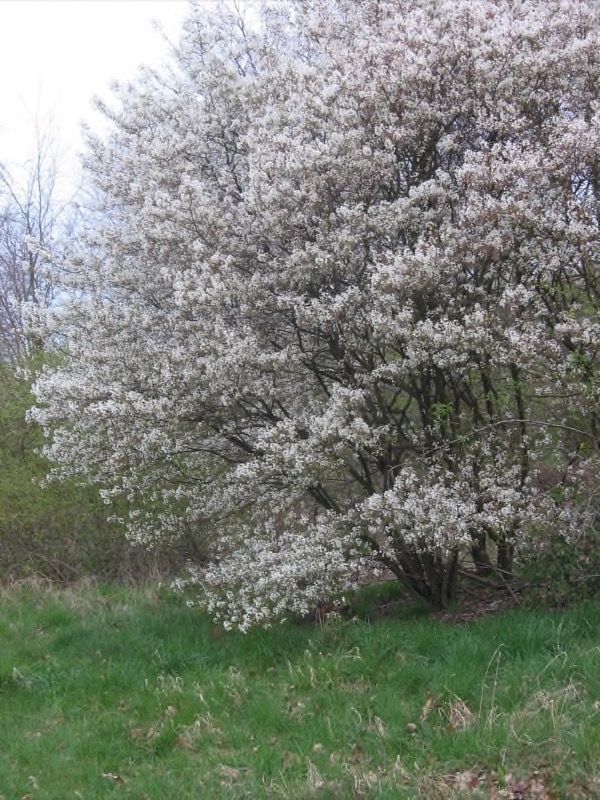
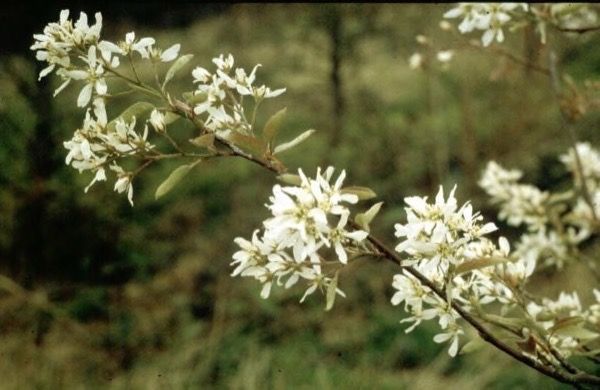
Database entry: https://www.pfaf.org/user/Plant.aspx?LatinName=Amelanchier+lamarckii

